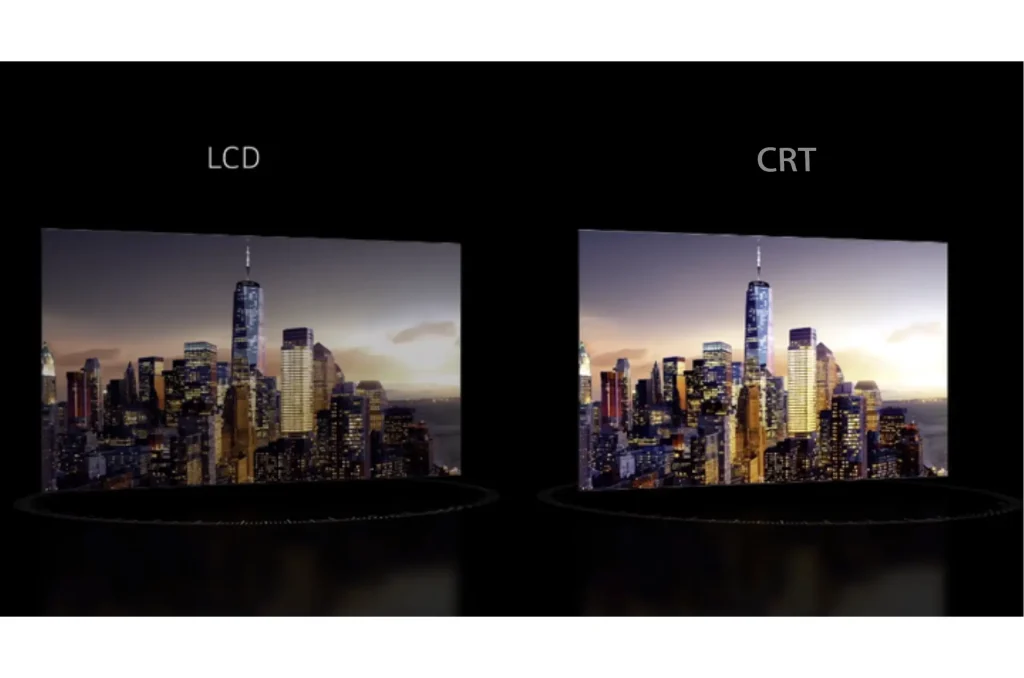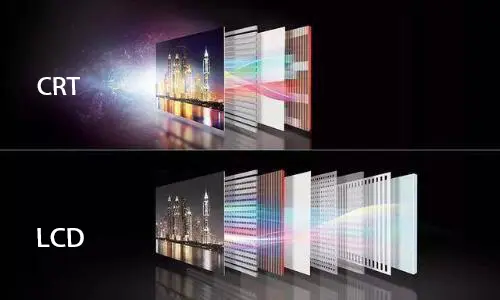
CRT Monitor vs LCD: Choosing the Right Display for You
Author:Yoda . 02/26/2024
In today’s digital era, the choice of a computer monitor has become a crucial decision point. This article delves into the differences between traditional CRT monitors and modern LCD monitors to help readers better understand and select the display that suits their needs.
Introduction to CRT and LCD Monitors
The evolution of computer display technology has seen a significant shift from traditional CRT monitors to modern LCD monitors. In this section, we will explore their respective technical principles, operational methods, features, and advantages.
CRT Monitor
Technical Principles and Basic Operation
The CRT monitor is based on cathode-ray tube (CRT) technology. Its core principle involves generating an electron beam that moves across a fluorescent screen, stimulating pixels to emit visible light and form an image. Specifically, the electron beam scans the screen vertically and horizontally in a specific pattern, exciting individual pixels to create the image.
Features and Advantages
– Color Depth and Contrast: CRT monitors are renowned for their deep blacks and high contrast, providing more vivid and accurate color representation. They are suitable for applications requiring high image quality, such as professional graphic design.
– Response Time: Due to the direct manipulation of pixels using an electron beam, CRT monitors typically have faster response times, accurately tracking dynamic images. This makes them suitable for applications with high demands for response speed.
LCD Monitor
Technical Principles and Basic Operation
LCD monitors utilize liquid crystal display technology. The core component is the liquid crystal panel, where each pixel is controlled by liquid crystal molecules. By adjusting the orientation of the liquid crystal molecules, the transparency of light is controlled, enabling image display. Typical LCD displays include a backlight to ensure clear visibility in dark environments.
Features and Advantages
– Resolution and Color Performance: LCD monitors are favored for their high resolution and accurate color representation. Each LCD pixel can accurately display specific colors, providing clarity and color depth for tasks involving detailed images and text processing.
– Slim Design: LCD’s liquid crystal technology makes monitors thinner and more lightweight, suitable for modern office environments and mobile office needs. Their portability makes LCDs a more flexible display solution.

crt monitor vs lcd Detailed Description of Functions
When choosing a computer monitor, a comprehensive understanding of its various functions is crucial.
Image Quality
CRT Color Depth and Contrast
CRT monitors excel in image quality with outstanding color depth and contrast. Color depth refers to the number of colors a monitor can display, while contrast determines the difference in brightness and darkness levels in an image. CRT’s direct excitation of pixels using an electron beam gives it an advantage in color representation and contrast, particularly suitable for the demanding field of professional graphic design.
LCD Resolution and Color Performance
LCD monitors adjust the transparency of light through liquid crystals to form images. Their high resolution and accurate color representation make them exceptional for displaying detailed images and handling general image processing tasks. However, some professional designers may find LCDs slightly inferior to CRTs in terms of color depth and contrast.
Size and Weight
CRT Bulky Size and Weight
CRT monitors, due to their technological principles and construction, are typically bulky and occupy more space. The internal structure involving glass tubes and electron gun components results in a relatively large size and weight. This makes CRTs less suitable for modern, lightweight, and portable office environments.
LCD Slim Design
LCD monitors, using liquid crystal technology, feature a more slender design. This not only minimizes the space occupied on office desks but also makes them more suitable for carrying and moving. For users who frequently change workplaces or have limited space, the lightweight and thin design of LCDs provide a clear advantage.
crt monitor vs lcd Differences in Application Scenarios
CRT monitors and LCD monitors showcase unique advantages and characteristics in different application scenarios. The following will delve deeper into their applications in professional graphic design and office/business settings.
Professional Graphic Design
CRT’s Advantages in Graphic Design
In the field of professional graphic design, CRT monitors are the preferred choice due to their exceptional color depth and contrast. Designers require high precision in color accuracy and image detail, where CRTs still outperform LCDs. The broader color gamut and deeper blacks allow designers to make more precise adjustments and evaluations of images.
LCD Applications in Professional Design
While CRTs hold an advantage in graphic design, LCDs are gradually gaining recognition in the professional design field. The high resolution and portability of LCDs allow designers to work in various locations, and the modern aesthetic appeal of LCDs attracts some designers. Especially for those who need flexibility in movement and showcasing design work, LCDs become a more practical choice.

Office and Business Use
Comparison in Office Environments
In office environments, LCD monitors are more suitable due to their portability, energy efficiency, and space-saving characteristics. The high resolution and clarity of LCDs make document handling, spreadsheet work, and general office tasks more convenient. Additionally, the modern design of LCD monitors aligns with the aesthetic standards of contemporary offices.
Optimal Choice in Business Settings
In commercial scenarios, the portability and multitasking capabilities of LCD monitors make them the optimal choice. During business meetings, client presentations, and exhibition events, LCD monitors can provide clear images and a modern appearance. Their slim design facilitates easy installation and arrangement in limited commercial spaces, and the high resolution contributes to presenting refined business content.
Conclusion
Through this comparison, it is evident that CRT monitors and LCD monitors each have unique advantages in different aspects. Choosing the most suitable display depends on specific requirements, considering differences in image quality, size, weight, and application scenarios. While CRTs still have a place in the realm of professional graphic design, LCDs prove more practical in modern office and business environments. This article aims to help readers better understand the distinctions between the two, enabling them to make informed and wise choices. Contact us now
For LED product information, please contact +86-13723425043, email: lindawu@szyoda.com






